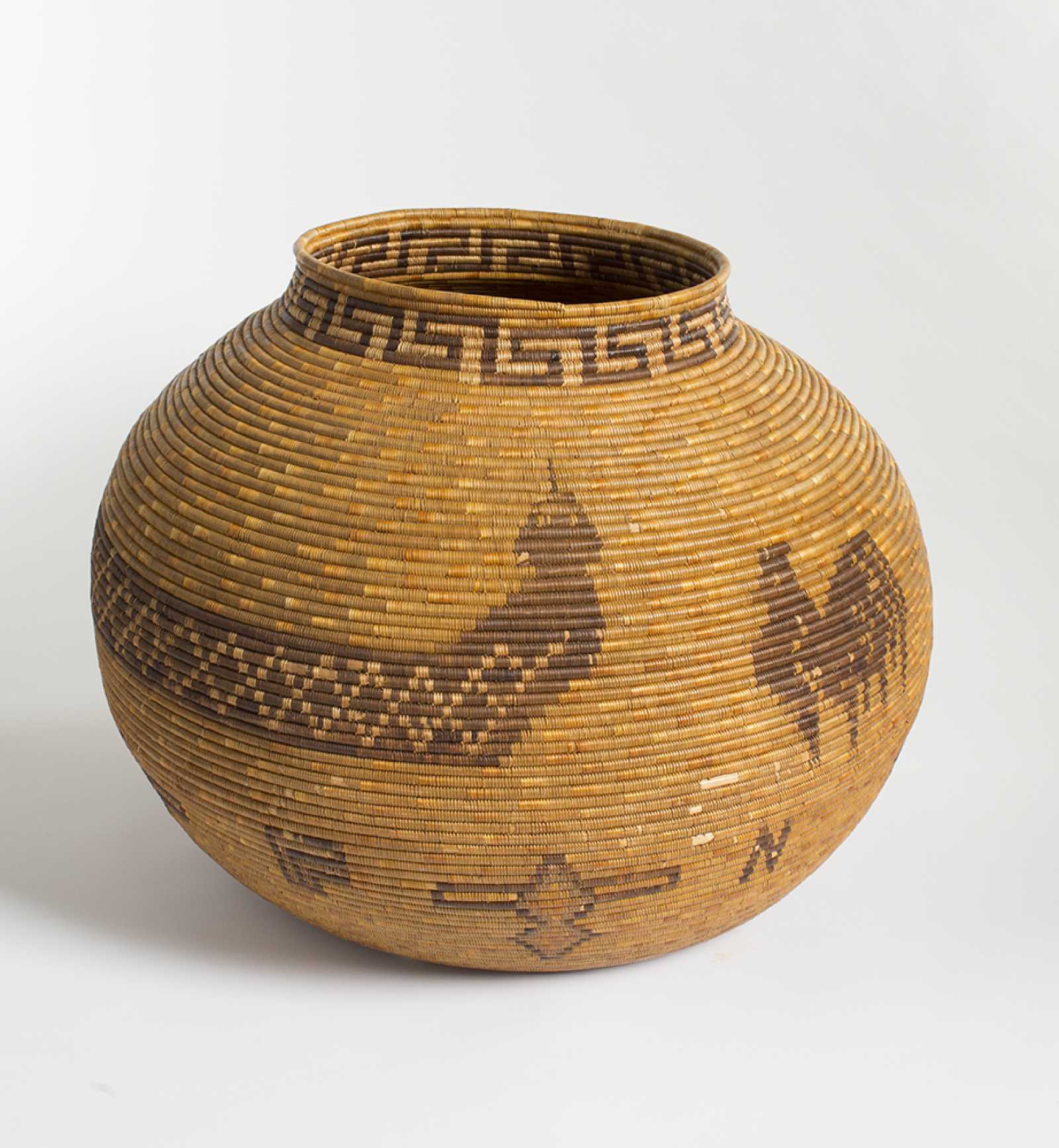Artwork of the Week
Dolores Patencio
The finest examples of Native American basketry transcend function, and convey cultural and artistic expression. Nowhere is there greater diversity of materials, styles, and designs than in California basketry. Cahuilla basket weavers, for example, are well known for their intricate, bold designs and attention to detail as in Dolores Patencio’s Large Olla Storage Basket. Unique in its large size, this basket exemplifies quality in form, design, weave, and overall execution. Attention to detail is expressed in the precise patterning of the diamonds along the snake’s back as it coils around the body of the basket, its head pointing upwards and tongue extended. Other animals represented include eagles and a rooster, and Patencio has also woven in several abstract elements, including diamonds, the letter “N," and a bold, meandering fret around the neck.
Dolores Patencio, born Dolores Saneva in about 1860 or 1861, was a member of the Coyote moiety of the Southern California Cupeño tribe. In 1881, she married Francisco Patencio (1857-1947), head of the Aqua Caliente Band of Cahuilla Indians, and moved to his home in Palm Springs.
Dolores Saneva Patencio (Cupeño (Kuupangaxwichem), Cupa (Kupa) Reservation and Cahuilla, Agua Caliente Band, c. 1860 - 1931), Large Olla Storage Basket, c. 1910, sumac, natural and dyed juncus on a deer grass bundle foundation, 18 × 22 inches. Museum acquisition by exchange: Gift of Winifred Little, Edwin D. Walker and Mr. and Mrs. James H. Kelley, A1-1988. © Palm Springs Art Museum, photograph by Taylor & Associates, Inc..
Peter Voulkos
During the 1950s and 1960s, Peter Voulkos was a primary force behind the California clay art movement, which challenged hierarchical attitudes toward ceramics as a craft. He made bold, energetically constructed ceramic sculptures, effectively transposing into three dimensions Abstract Expressionist dynamics found in painting. Voulkos became familiar with Abstract Expressionist painters during a summer of teaching at the experimental Black Mountain College in 1953 where interdisciplinary experimentation between media was encouraged. Pottery #1 is a roughly formed vase-like structure, with vertical double necks emerging from a wider body, and black and blue spots of color standing out against a white ground.
Born to Greek immigrant parents in Bozeman, Montana, Voulkos studied at Montana State College and earned his MFA from the California School of Arts and Crafts in Oakland in 1952. In 1954 he was invited to teach at Otis College of Art and Design, Los Angeles, and in 1959 he founded the ceramics department at the University of California at Berkeley where he taught until 1985.
Peter Voulkos (American, 1924-2002), Pottery #1 (Double-neck Vase), 1958, stoneware with white slip painted with color slips, 19 ½ × 9 ½ × 9 ¼ inches. Collection of Gwendolyn Weiner, L1982-9.


